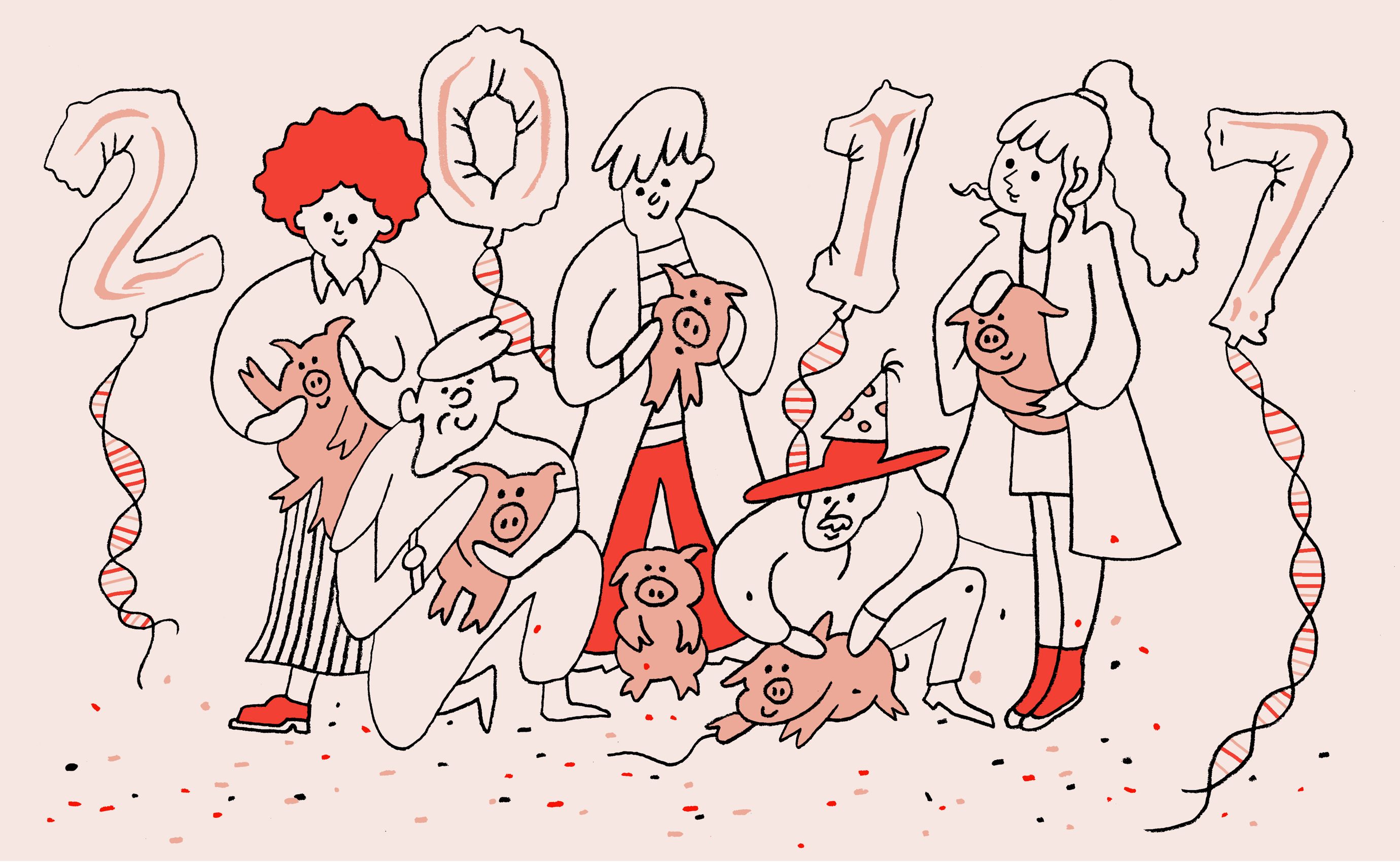Four Amazing Things Gene Editing Did in 2017

Gene editing hasn’t cured disease in a human being yet—but it is getting closer. With the debut of CRISPR a few years ago, advances in the technology have been happening at a breakneck pace. Here are a few of the remarkable things that gene editing did in 2017.
1. The first human embryos in the U.S. were modified with CRISPR.
In August, researchers at Oregon Health and Science University, led by Shoukhrat Mitalipov, reported the first known attempt at genetically modifying human embryos in the U.S. They injected CRISPR into embryos that carried a genetic mutation responsible for an often fatal hereditary heart condition. CRISPR was able to correct the mutation in about three-quarters of the embryos. Researchers in China had previously edited human embryos with CRISPR, but this was the largest attempt at altering embryos to date.
2. CRISPR got more precise.
CRISPR and other genome-editing methods work by making double-stranded breaks in DNA, which is especially useful if you want to insert or delete entire genes. But some genetic aberrations happen at an even more minute level of the genome. Sometimes you might only want to edit, delete, or insert a single letter of DNA, not a whole gene. This idea, called “base editing,” got closer to reality in 2017. Researchers modified CRISPR to target a single base letter instead of a gene in human cells. With the new tool, they were able to convert an A-T base pair into a G-C pair. The feat is noteworthy because mistakes in a single base pair account for about half of the 32,000 mutations known to be linked with human diseases.
3. Scientists used CRISPR to prep pigs as a future source of human organs.
This year, startup eGenesis, a spinout from the lab of Harvard Medical School geneticist George Church, took a step forward in modifying pigs using CRISPR. The company wants to fill a huge need for organ transplants by making pig organs safe enough to be used in humans with heart, liver, kidney, or lung failure. One problem is that pigs harbor innate viruses in their DNA that could be transferred to human recipients and cause disease. Researchers at eGenesis used CRISPR to disable these viruses in pig embryos. When the pigs were born, all 37 of them were healthy and virus-free.
4. A gene-editing treatment was injected directly into a patient.
A 44-year-old man became the first person to receive a gene-editing treatment designed to directly modify his cells. The therapy uses an older DNA editing approach called zinc finger nucleases, rather than CRISPR. The approach is meant to correct an error in a gene that causes a rare metabolic disorder that slowly destroys the body’s cells. Sangamo Therapeutics, the company that makes the experimental therapy, previously used the same technology to edit the cells of HIV patients outside the body and then infuse them back into patients in an attempt to eliminate the virus. The treatment didn’t have a lasting effect, but Sangamo hopes that directly injecting the gene-editing tools into the body will have a better chance of working.
Deep Dive
Biotechnology and health
How scientists traced a mysterious covid case back to six toilets
When wastewater surveillance turns into a hunt for a single infected individual, the ethics get tricky.
An AI-driven “factory of drugs” claims to have hit a big milestone
Insilico is part of a wave of companies betting on AI as the "next amazing revolution" in biology
The quest to legitimize longevity medicine
Longevity clinics offer a mix of services that largely cater to the wealthy. Now there’s a push to establish their work as a credible medical field.
There is a new most expensive drug in the world. Price tag: $4.25 million
But will the latest gene therapy suffer the curse of the costliest drug?
Stay connected
Get the latest updates from
MIT Technology Review
Discover special offers, top stories, upcoming events, and more.